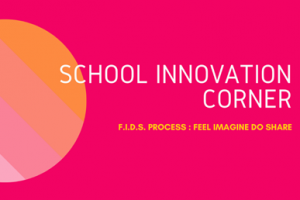The FIDS process can help students to build social and emotional competences and promotes employability through developing important life skills.
The Do stage gives full practice power to the learner and elevates responsibility, openness, and confidence.
The Share stage has the group reflect on the influence of their work and the learning process through this methodology. Teams make sure that their stories are concise and shareable.
Outcomes
One skill this process strengthens is empathy. In this sense, the relationship between learner and educator develops and grows enormously over the course of this process. The students’ emotions and feelings become important; they feel a sense of responsibility when working together in groups to achieve their goals. The same applies to the surrounding community. Parents often do not believe in their children’s skills and potential, but once they see what their children have achieved, they change their minds.
The Design for Change methodology is organised into four stages: feel, imagine, do, and share – which, altogether, will help students in the realisation of their projects as the theory of each technique combines with practice. What makes this method so innovative is the idea that the social change required must come from the students, so while the educator has an important responsibility in leading them, they themselves play more of a background role.
Origins

The Design for Change FIDS paradigm was developed by Kiran Bir Sethi who, according to the DFC website, “started this movement with a conviction that if young people were empowered and made to feel that they could take matters into their hands, they would change the world for the better.¨
Process, Interaction, and Decision-Making
The Feel stage is the crucial first step in helping students to “construct personality, capacity, and assurance as a problem solver.” The Imagine stage gives students a framework in which to transform their learnings from compassionate exploration into possible solutions.

